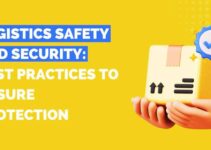Businesses and companies have faced many unpredictable SC disruptions and vulnerabilities, the recalling had cost millions of dollars to automobile, consumer electronics, and pharmaceutical companies. Today, we’ll discuss risk evaluation and management in supply chain; definitions of risk evaluation, risk management, SCRM, and step-by-step method of dealing with it.
According to a survey study in 2010 and it comprised a wide range of businesses and companies; approximately 639 business executives participated in it;
- 72% of them said that the SC risk is increasing
- 71% of them expected that the risk of SC disruption is increasing
The US government developed a task force in 2018 and took a stand against various agencies in order to deal with the SC risk factors. Many companies in the private sector are finding proven and uniform strategies and methods to evaluate and analyze the risk factor that would help them to decrease business disruption to a great extent.
What is Risk Evaluation?
Risk evaluation is the method of dividing the degree of risk factors relevant to dangerous and hazardous situations and circumstances. The objective of risk evaluation is to recognize the SCM practices and particular regions that are vulnerable to risk factors.
- Making adjustments to the reliable supply
- Balancing the probability of demand
- Effective and efficient allocation of resources
- Successfully launching a new product
- Economic situation and circumstances
- The opportunity cost of making alternative decisions
What is Risk Management?
Risk management is the method of analyzing and calculating the risk factors and managing the risk factor. It deals with the vast area of decision-making and planning focuses on managing the risk and danger. However, the risk comprises highly effective risk disruption, supply, managing internally, and unpredictable demand. Some of the main elements relevant to the exposure to risk are as follows;
- Government response
- Supplier response
- Competitor response
- Customer response
What is Supply Chain Risk Management (SCRM)?
Supply chain risk management is the method of managing risks through coordination and collaboration with SC partners in order to make sure profitability and productivity. The SCRM process means transaction risk to another 3rd party for risk sharing and risk aversion. However, the risk evaluation of SCM helps you to do the following;
- Balancing the probability of demand
- Managing the probability of reliable supply
- Effectively allocating resources
- Probability of launching a new product
- Economic situation
- The opportunity cost of the elective choice method
A well-developed SC risk analysis would help you to identify the disruption in the SC process. You can do so by analyzing the SC implementation, financial performance, and production. Implementing the risk control method, then it helps you to decrease the impact of the disruption processes.
The main goal and objective of SCRM is to successfully manage the risk. It is significant to recognize and analyze the SC processes for effective implementation.
Risk Evaluation and Management in Supply Chain
Some of the main steps in risk evaluation and management in supply chain are as follows;
Recognizing & Documenting Risk
The first step of recognizing the risk factor means mapping and analyzing the value chains of all the products. It comprises analyzing various stages in the SC process like transport routes, warehouses, plants, and suppliers. Next, you should document the risk factor on the risk register and track it continuously and regularly. Various parts and stages of the SC process where there is no existence of the data, and require you to record further investigation.
Establishing SCRM Framework
You should rank and store every risk factor documented in the register, and you can score them based on the following dimensions to establish a well-integrated risk-management framework.
- Preparing the company to manage the specific risk factor
- Probability of risk materializing
- Impact on the company if risk materializing happens
It is significant to develop and utilize the scoring strategy to analyze the risk factors. It helps you to aggregate and prioritize the risk factors and threats to recognize the most risky product in the SC process with the great potential of failure.
Evaluating Risk
After developing the risk management framework, it is significant to evaluate the critical success factors and recognize the risk that would jeopardize the company. The development of digital tools, applications, and software has made it possible to manage the SC processes, track and recognize the potential risk factors.
For instance, a company is operating its business in the regulatory industry and it has recognized 25 quality issues at its contract manufacturing plants. They vary from the structural drive and geographical location to metrics of operational performance like deviation cycle time and right first time.
Governance & Reviews
The governance mechanism of effective SCM comprises of cross-functional risk board where participants are from different stages of the supply chain. It consists of line managers and they play the function of risk owners, they take the ownership and responsibility of recognizing the risk and reducing it. Often, the risk board receives support from the staff with expertise and the central risk management function on receiving guidelines for recognizing and decreasing the risk factor.
Conclusion: Risk Evaluation and Management in Supply Chain
After an in-depth study of risk evaluation and management in supply chain; we have realized that SCRM plays a significant role in recognizing and managing risk. If you are learning about risk evaluation and management in SCM, then you should keep in mind the abovementioned internal and external factors.
Ahsan is an accomplished researcher and has a deep insight in worldly life affairs. He goes Live 3 days a week on various social media platforms. Other than research writing, he’s a very interesting person.


